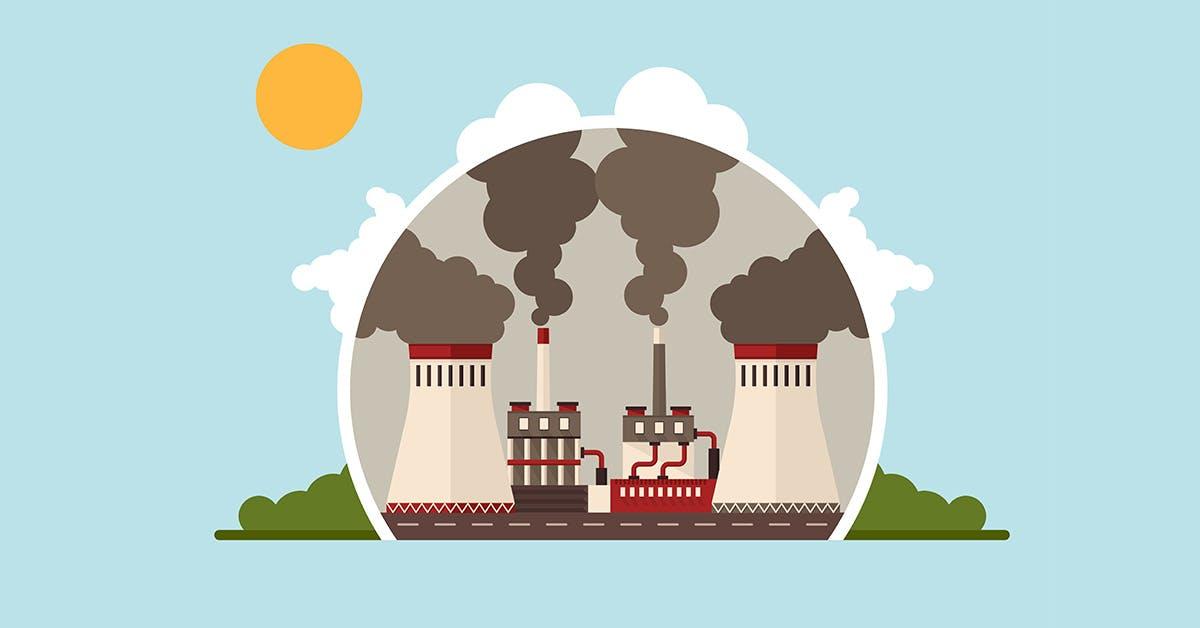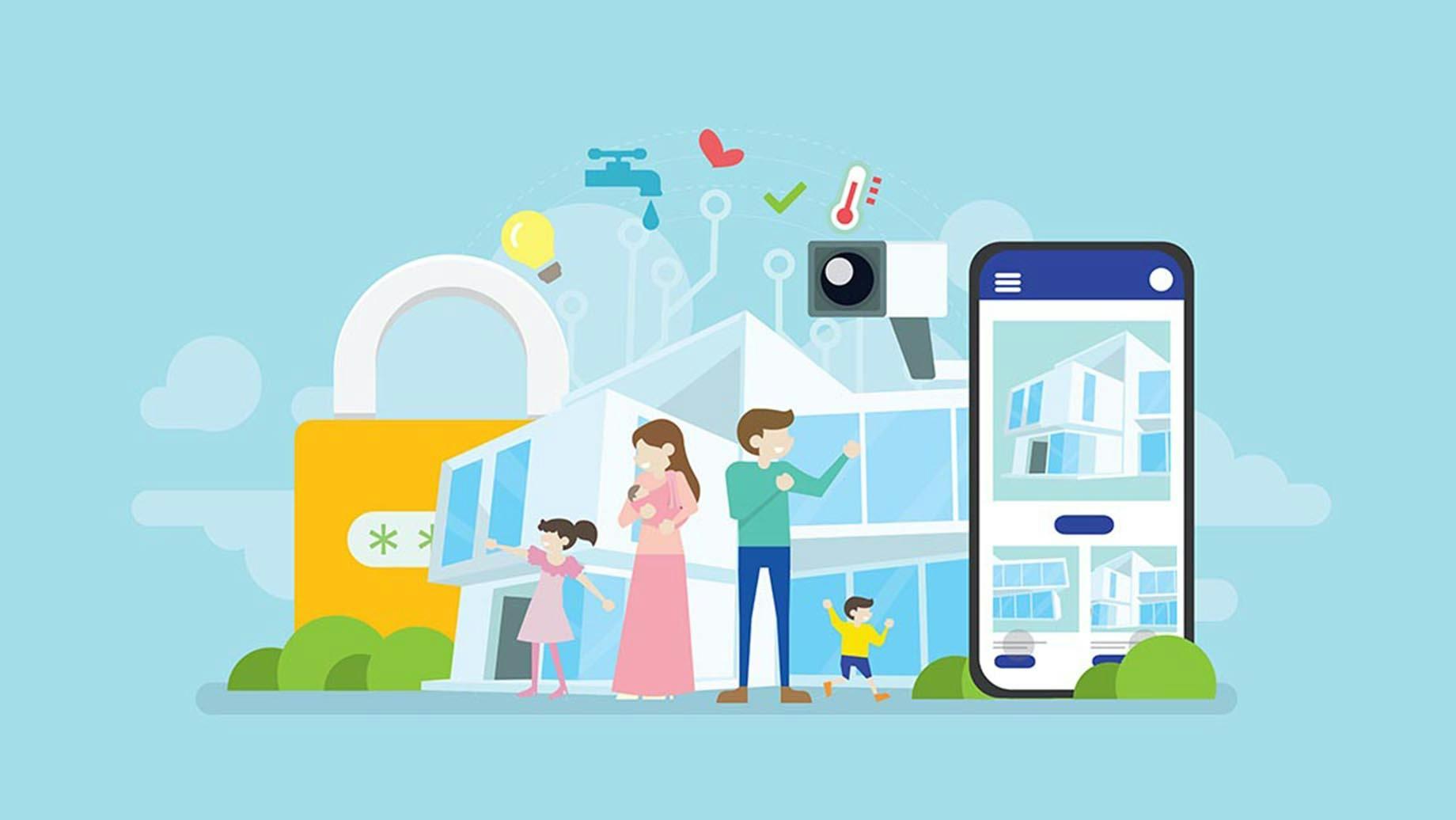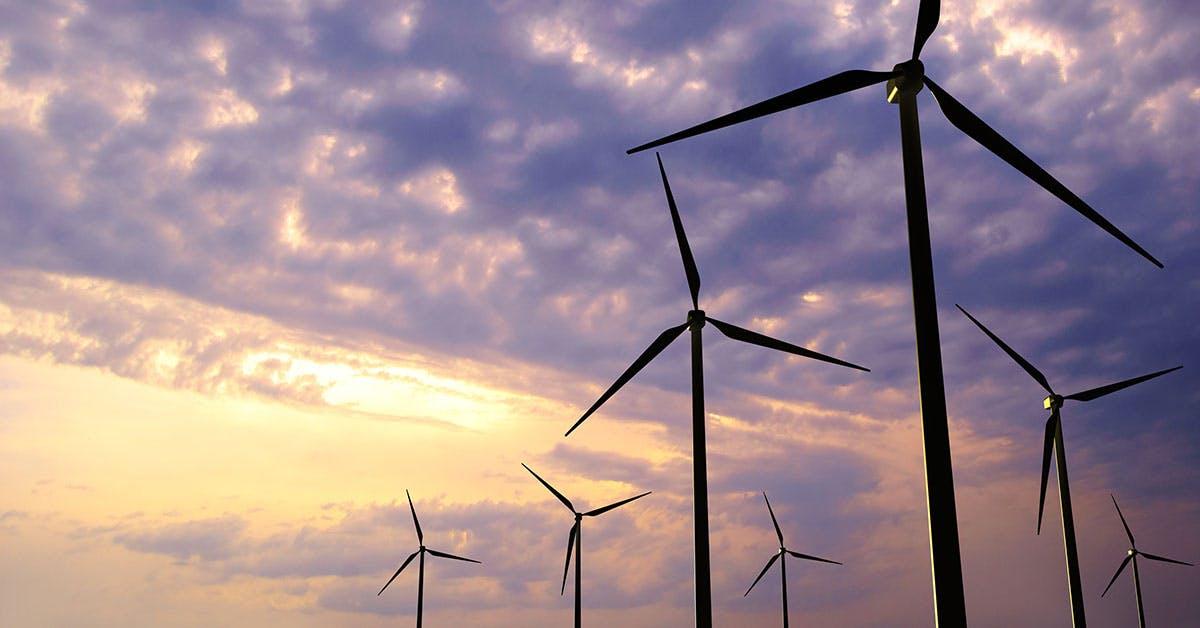
What is Alternative Energy: Types of Alternative Energy Sources
Inspire Clean Energy
0 min read
category: Clean Energy 101
Don't worry about climate change— do something about it.
Our clean energy plans are the easiest way to reduce your home's carbon footprint.
Switch to clean energyWhat are alternative energy sources?
Alternative energy refers to energy sources other than fossil fuels (such as coal, petroleum, and diesel) and includes all renewable and nuclear energy sources.
Although nuclear energy is not as bad for the environment as fossil fuels, it still isn’t classified as a renewable energy source because nuclear material cannot be replenished within a human’s lifetime. Nuclear energy is produced by using elements like uranium and thorium, which cannot be replenished and have a finite amount in existence.
What is an advantage to alternative energy technology?
The major advantage of alternative energy technology is that it won’t run out. Our days using fossil fuels are numbered, and so any and all alternative energy sources are beneficial over traditional sources. Another huge advantage is that many of them do not require the same damaging and expensive extraction techniques, as much of it is available to us here on the surface.
If you have been thinking of lowering your reliance on fossil fuels, and are wondering how to get started, you can look into changing energy plans.
What are the different types of alternative energy?
There is a surprising number of forms of alternative energy, some well known, while others are relatively unheard of. They are:
- Wind energy: This is one of the cleanest and most accessible sources of energy. Wind power is sustainable and does not release carbon emissions as a by-product. It’s also entirely renewable, as there will always be wind. Energy sources such as fossil fuels often fluctuate in price. A typical wind farm repays its carbon footprint in around six months or even less, which provides decades of zero-emission energy that displaces fossil fuel energy.
- Solar energy: This is probably the most commonly known source of alternative energy, and for good reason. Solar energy is completely renewable, and the costs expended on installation can be made back through energy bill savings. The only potential setback of solar panels is that they are prone to deterioration over time and aren’t completely weather-safe in countries with erratic weather conditions.
- Nuclear energy: This is taken from the core of an atom, which must be split to gain its energy, a process called fission. This is harnessed in a power plant, where rods of nuclear material adjust how much electricity is produced. The more rods that are present during the chain reaction, the slower and more controlled the reaction will be. Removing the rods will allow a stronger chain reaction and create more electricity. Whether or not nuclear energy should be considered renewable is a constant debate.
- Hydrogen gas: This is an important energy carrier and a potential alternative clean energy fuel with a notable stake in the global fuel market. However, today, hydrogen gas is largely produced from fossil fuels, which pose a threat to the environment. A more sustainable version of this energy source has been described as biohydrogen, and there are hopes it will be derived from organic, biodegradable waste in the future.
- Tidal energy: This method of energy production is still fairly new and has only produced a small amount of energy so far, so it will be a long time before we see real results from tidal energy.
- Biomass energy: This type of energy can come in several forms. Biomass energy can include anything from burning wood to burning waste, as many countries do now. With biomass in the form of burning wood, the heat generated is often equivalent to that of a central heating system, and the costs involved tend to be lower than a household or building that uses fossil fuels. It’s not, however, a green energy source, even if it is technically renewable.
- Biofuels: Biofuels are somewhat similar to biomass, but biofuels use biological matter (animal and plant) to create energy. Biofuel is renewable when plants are used because, of course, plants can always be grown. However, they do require dedicated machinery for extraction, which can indirectly contribute to increased emissions even if biofuels themselves don’t. In 2020, total biofuels consumption accounted for about 5% of total U.S. transportation sector energy consumption.
What are examples of alternative energy?
Besides the seven energy sources listed above, other alternative energy sources include geothermal power, wave energy, hydroelectric energy, solar thermal energy and even space solar energy.
Geothermal energy is that generated in the earth and harnessed, while wave and hydroelectric energy harness the power of water. Of course, solar thermal energy and space solar energy are other ways of harnessing solar energy.
Are there any companies that use renewable energy sources to provide electricity to homes?
Yes! Inspire is a clean energy company that provides clean and sustainable energy options like wind power to homes across the U.S. Since launching in 2014, we've helped avoid seven billion pounds of carbon from being emitted into the atmosphere.
We are dedicated to creating a transformative smart energy experience that’s best for our customers, our partners, our team, and of course, our planet.
Why are alternative fuels called green energy?
Alternative fuels are often described as “green” or renewable energy, but this isn’t always the case. Alternative energy is a broader category that encompasses all non-fossil-fuel-based energy sources and processes, of which renewable energies are only a part.
What are the pros and cons of alternative energy?
This can depend on the specific source of energy, of which there are many, for example:
- Biomass comes from the burning of organic matter, which is an efficient use of waste. However, this process requires large landfill spaces and may result in pollution due to the burning of this matter.
- The pros of wind energy are that it is sustainable, wind turbines are relatively harmless to surrounding wildlife and are inexpensive to build and maintain.
- Solar power has similar pros and cons to wind energy: the sun will always shine just in varying amounts on each day. The pros of solar power are that there’s an unlimited supply of sunlight. However, it relies entirely on sunlight, so panels only produce energy when the sun is shining. This renders solar panels fairly useless on overcast days, during the night, or if a building has a west-facing roof.
Each individual source of energy has its own set of pros and cons, as well as variables that should be taken into account, such as location, climate, financial benefits and, most importantly, the overall reduction of damage done to the environment.
Why do we use alternative sources of energy?
One of the main reasons we use alternative sources of energy is to reduce our carbon footprint. As of 2020, the production and consumption of renewable energy have reached record highs. As biofuels, geothermal energy, solar energy, and wind energy continue to increase, so does the use of renewable energy. Local governments and citizens can access renewable energy. From a local government perspective, renewable energy can help meet local goals while leading by example. Renewable energy can provide economic and environmental benefits, including producing energy that releases no greenhouse gas emissions, reducing dependence on imported fuels, and supporting economic development.
With electricity generation being the leading cause of industrial air pollution in the U.S., it’s clear why there is a push for alternative energy sources. As technology advances, we can now make an abundant energy supply with little to no impact on the environment. Alternative sources of energy also provide more pricing stability since they do not entail fuel costs or transportation. Alternative energy sources can also reduce CO₂ emissions. CO₂ emissions pose an environmental threat that may cause droughts, heat waves, coastal flooding, severe storms, and more.
Some of the most commonly used renewable power sources include:
- Solar
- Wind
- Biogas
- Geothermal
- Biomass
- Wave and tidal power
- Low-impact hydroelectricity
How do you use alternative energy sources?
With alternative energy sources trending, you may be starting to wonder how you access alternative energy? Do you have to install your own solar system? Do you have to install a wind turbine? While you could install your own renewable energy on-site, you don’t necessarily have to. We can provide access to renewable energy sources. Simply visit Inspire Clean Energy and enter your ZIP code to check availability.
Installing solar panels is a trending way to power your home with renewable energy. With enough solar panels, you may even be able to power nearby homes. As demand for solar has increased, prices have decreased. In addition, there are tax incentives for installing solar panels. While you may replace your electricity bill with a solar payment, should you choose to finance the solar system, over time, a solar system can pay for itself. In the U.S., the average cost to install a solar system is around $12,000, after federal tax incentives. If you are considering installing solar panels, you should receive an estimate to determine if it’s in your budget or not. Most companies will provide a complimentary estimate. You may want to compare the cost of subscribing to a service such as Inspire. You may not have to put up the investment and time to access renewable energy.
Why is nuclear energy not a renewable source of energy?
Nuclear energy is more environmentally friendly than fossil fuels, but it’s not considered a renewable energy source. Nuclear energy is not an alternative source of energy because the materials used in a nuclear power plant are not renewable. Within a human’s lifetime, nuclear material cannot be replenished. Around the world, nuclear energy is a common source for generating electricity. While nuclear power plants are more environmentally friendly, it isn’t easy to harvest nuclear energy. In addition, nuclear energy can produce radioactive waste, which can be toxic. While nuclear energy may help global warming, we still need renewable energy sources. Each resource can play an essential part in reducing our carbon footprint and saving the environment.
What is the most used alternative energy source?
In 2020, wind was the most used renewable energy source in the United States, which saw a 14% growth from 2019 to 2020. Renewable energy became the second most prevalent energy source in the United States, producing 21% of the total electricity generated in the U.S. in 2020. Renewable energy was second to natural gas, which produced nearly double the electric output of renewables. The growth of renewable energy in 2020 was due in part to the rapidly diminished usage of coal, while electrical generation steadily grew for renewable energy, particularly wind and solar.
Offshore, distributed, and utility-scale wind are three different types of wind power. Offshore wind power is more complicated to build and more expensive than nuclear power. Offshore wind turbines need to be near bodies of water. In the U.S., wind energy provides 88,000 jobs and counting. Wind turbines are often built on the same land that is used for farming. While they may be expensive to make, they do not require fuel to operate.
The downside is that wind is often intermittent. In addition, turbines can be noisy. While they are best in rural areas, it can be challenging to transport wind turbines. As technology continues to advance and the use of wind turbines increases, we can hopefully learn to overcome some of the challenges associated with wind energy.
What is the cheapest alternative energy source?
In 2019, according to IRENA Renewable Power Generation Costs, solar and wind were reported to be the cheapest energy sources. In 2019, wind turbine energy costs had an average of $0.053 per kWh, while the price of photovoltaic solar was $0.068 per kWh.
While you may pay an electricity bill every month, you may have no idea what your actual cost per kWh is. For an exact comparison, you can reference your utility bill to see what energy rates are in your area. For comparison purposes, electricity usually costs about $0.05 to $0.17 per kWh. IRENA predicts that we could see solar and wind electricity available for as low as $0.03 per kWh within the next few years.
With solar booming, we may run into a problem down the road when a large handful of homes need solar replacement. Solar panels are difficult to recycle, which could cause delays in replacing solar systems. The government and third-party companies are investing research and planning into developing solar systems. Eventually, they will need to place a strong focus on how to recycle solar panels.
Which alternative energy is growing the fastest?
At the top of the list, hydropower, solar power, and wind energy are growing quickly. Hydropower might not be the first renewable energy source that comes to mind, but it’s widely used and deserves recognition. Wind energy has surpassed hydropower in recent years, but some still believe hydropower is the most used and fastest-growing renewable energy source. Dams supply much of the water that is released and delivered to the turbine to generate power. Natural running rivers or tides can also provide water for hydropower. One benefit of hydropower is that it can provide backup energy with short notice since it can be generated quickly. China gets about 15% of its energy from hydropower, making it the largest hydroelectric user globally.
In addition to hydropower, solar power, and wind energy, we should also mention bio-power and geothermal. Bio-power is a fast-growing renewable energy source that uses agricultural by-products and modern biomass to create energy. Geothermal energy is produced mainly in Iceland, producing nearly 26.5% of the country’s electricity. In addition, it also makes 87% of Iceland’s housing and building needs by utilizing natural hot water sources underground.
Is alternative energy cost-effective?
Because the phrase “alternative energy” is a blanket term that takes into account more than 10 different sources, this is dependent on the specific energy source.
Wind is one example of a cost-effective alternative source of energy. Because wind turbines are relatively cheap to build and require little maintenance, energy suppliers can offer lower prices as their outgoings are less.
Besides wind farms, the top cheapest alternative energy source is solar. As mentioned before, the sun will always shine. Of course, some days will have longer periods of sun, and some countries will have this more often.
So, how can you get these benefits? That’s what we do – we help people change energy plans. When you sign up, we’ll purchase Renewable Energy Certificates (a way to track energy generated from renewable sources) on your behalf and let your energy provider know you’ve made the switch.
Why should we switch to alternative energy sources?
Our reliance on fossil fuels has been the main cause of damage to the environment so far, and ongoing damage from this use can be brought to a halt if we switch to renewable energy sources such as wind, solar, and hydropower.
Simply put, if we take advantage of the fact that there will always be sun, water and wind, and we harness their power for our electricity, we can decrease the planet’s pollution levels year-after-year. So, while the term “alternative energy sources” technically includes some sources that aren’t green, switching to more sustainable sources of energy will seriously help improve the environment.
Are you ready to access clean energy and help create a greener future? Look into changing energy plans today and join Inspire! We're a renewable energy company passionate about empowering our customers to do the right thing for the environment, themselves, and their families. We want to make it easy and affordable to choose clean energy.
Not sure if renewable energy is right for you? Read the latest Inspire Energy reviews to see how we've helped customers make the switch.
What is the cleanest form of renewable energy?
All forms of energy have drawbacks. However, these drawbacks vary greatly depending on the source of energy. For example, fossil fuels are the dirtiest and most dangerous, while nuclear and renewable energy sources are cleaner and far safer. And wind energy is a clean, non-polluting, free, renewable resource.
The next cleanest form of renewable energy comes from water in the form of hydropower. The world's hydropower capacity reached a new high of 1,308 gigawatts in 2019. Hydropower is used to create electricity worldwide because it is inexpensive, easy to store and dispatch, and produced without the use of fossil fuels, which means it does not emit carbon dioxide or pollutants like power plants that burn coal or natural gas.
How is America relying on alternative sources of energy?
Until the mid-1800s, wood provided nearly all the nation's energy needs for heating, cooking, and lighting. But fossil fuels such as coal, petroleum, and natural gas have been the primary energy sources since the late 1800s. Until the 1990s, the most common renewable energy sources were hydropower and wood.
Biofuels, geothermal energy, solar energy, and wind energy have all increased their share of U.S. energy consumption since that time. In 2020, total renewable energy production and consumption in the United States set new records: The electric power sector accounted for more than 60 percent of total U.S. renewable energy consumption, and renewable energy sources accounted for roughly 20 percent of total U.S. electricity generation.
How is solar energy improving?
Solar power continues to gain clout, but its proportion of the energy market has plenty of room to expand. While solar panels are being installed on more commercial and residential rooftops every day, consumers, let alone enterprises, are still not taking advantage of the full potential of this renewable energy source.
Energy sectors are working hard to improve solar energy by 2050 and decarbonize the electric grid. Scientists are currently working on the efficiency of solar cell material and improving storage facilities and conditions. Additionally, researchers are working on grid integration, stacking two different types of solar cells, using nanomaterials, and making systems more flexible for growth.
As solar energy prices decrease, implementation can take place on a larger scale, as can research. As a result, solar could become the most important source of energy for electricity production in a major area of the planet by 2030. This will also benefit the environment and combat climate change.
Why is wind energy promising?
Wind energy has numerous advantages, making it a promising option for renewable energy—not just for the environment but also for individuals. First, wind energy is a low-cost option at only a few cents per kilowatt-hour. Because its power is provided at a fixed price over a long period of time and its fuel is free, wind energy reduces the price unpredictability that accompanies traditional energy sources.
Wind power can lessen the need for air-polluting energy sources such as fossil fuels, coal, natural gas, and other sources, especially because it is an environmentally favorable fuel source. As a bonus, wind energy has created over 100,000 jobs, making it one of the country's fastest-growing industries.
Where is hydropower being used?
Hydroelectricity, or hydropower, is an energy source that generates electricity by harnessing the power of moving water, such as a waterfall. For millennia, people have exploited this force. People in Greece utilized flowing water to turn the wheels of their mills to grind wheat into flour over 2,000 years ago.
Hydropower is the most widely used renewable energy source. China is the world's greatest hydroelectric power producer, followed by countries like the United States, Brazil, Canada, India, and Russia. Hydropower accounts for over 71 percent of all renewable electricity generated on the planet.
Once converted into energy, water power works like other energy sources to power everything that requires electricity. First, water needs to fall into a turbine or generator to create electricity. After transportation, the electricity can enter your home to power all your electronics.
How does geothermal energy work?
Geothermal energy is a renewable energy source that comes from underground hot water reserves. Increased use of geothermal energy has the potential to reduce the use of fossil fuels and the accompanying greenhouse gas emissions in numerous economic sectors, including electricity, industry, and buildings.
The essence of geothermal power is harnessing the power of Earth's temperatures to power, heat, or cool our homes and businesses. Geothermal energy usually comes from volcanic regions.
First, an injection well is pumped with cold water at high pressure. The water expands natural fissures in the strata, allowing water to seep through the hot rock sideways. This is analogous to the fracking technique for extracting oil and gas without using hazardous chemicals.
A number of “producing wells” are drilled nearby to allow the heated water to return to the surface. Drilling these wells requires some luck, since they must hit one of the tiny fissures to harvest the water. Then the hot water is transferred via a heat exchanger at the surface to boil a secondary fluid, such as butane, which creates a high-pressure gas that drives a turbine and generates power. Finally, in a closed-loop, the cooled water is pumped back into the rock strata before going to a power plant for disbursement.
Is biomass energy growing?
Biomass is organic material that is renewable and comes from plants and animals. Until the mid-19th century, biomass was the primary source of total yearly energy consumption in the United States. In fact, biomass remains a popular fuel in many locations, particularly in underdeveloped countries, for cooking and warmth.
Many developed countries are boosting their use of biomass fuels for transportation and electricity generation as a way to reduce carbon dioxide emissions from fossil fuel consumption. Biomass accounts for roughly 5 percent of total primary energy consumption in the U.S.
Biomass is composed of plants or animals and contains chemical energy that has been stored from the sun. It can be burned directly for heat or processed into renewable liquid and gaseous fuels using various techniques.
In 2018, power generated from biomass and waste accounted for 70.6 million megawatt-hours (MWh), or about 2 percent of total electricity generation in the United States. Though energy output from biomass and garbage was on the rise from 2004 to 2014, it has slowed in recent years and dropped below its peak generation of 71.7 million MWh.
Is alternative energy less expensive than fossil fuels?
Costs for newer items are higher than prices for items that have been around for a while. While renewable energy sources were initially expensive, prices dropped by up to 62 percent as they became more widely used. Solar power costs have decreased by 16 percent, while wind costs have decreased by 9 to 13 percent. Even large-scale solar power has decreased by about 85 percent. And in Europe, new coal facilities are more expensive than wind or solar farms.
While renewable energy sources are more cost-effective, the lack of implementation is blocking the transition to clean energy for most households. Cost comparisons will not be possible until implementation methods are provided. According to all analyses, renewable energy is expected to become less expensive as infrastructure becomes available.
Can alternative energy sources replace fossil fuels?
It's hard to determine whether or not a single renewable energy source can completely replace fossil fuels. Instead, a combination of sustainable energy sources is more likely to be used to replace them. Popular Science states that by 2035, we will have transitioned to renewable energy sources for 100 percent clean power at a lower cost and with fewer transitions than projected because of a clever new Panasonic home battery system called EverVolt.
It is possible to move to 80 or even 90 percent sustainable energy in the coming years and, in turn, move away from fossil fuels. Prices for wind turbines, solar panels, and batteries have been decreasing and will hopefully continue to do so to meet the 2035 deadline. In addition, companies could move to carbon-free power plants without increasing expenses because prior gas or coal-fired power plants were paid for by consumer expenditure.
Don't worry about climate change— do something about it.
Our clean energy plans are the easiest way to reduce your home's carbon footprint.
Switch to clean energy
Inspire Clean Energy
We're on a mission to transform the way people access clean energy and accelerate a net-zero carbon future.
Learn more about Inspire →Explore more
Recent Posts
Top Articles





















